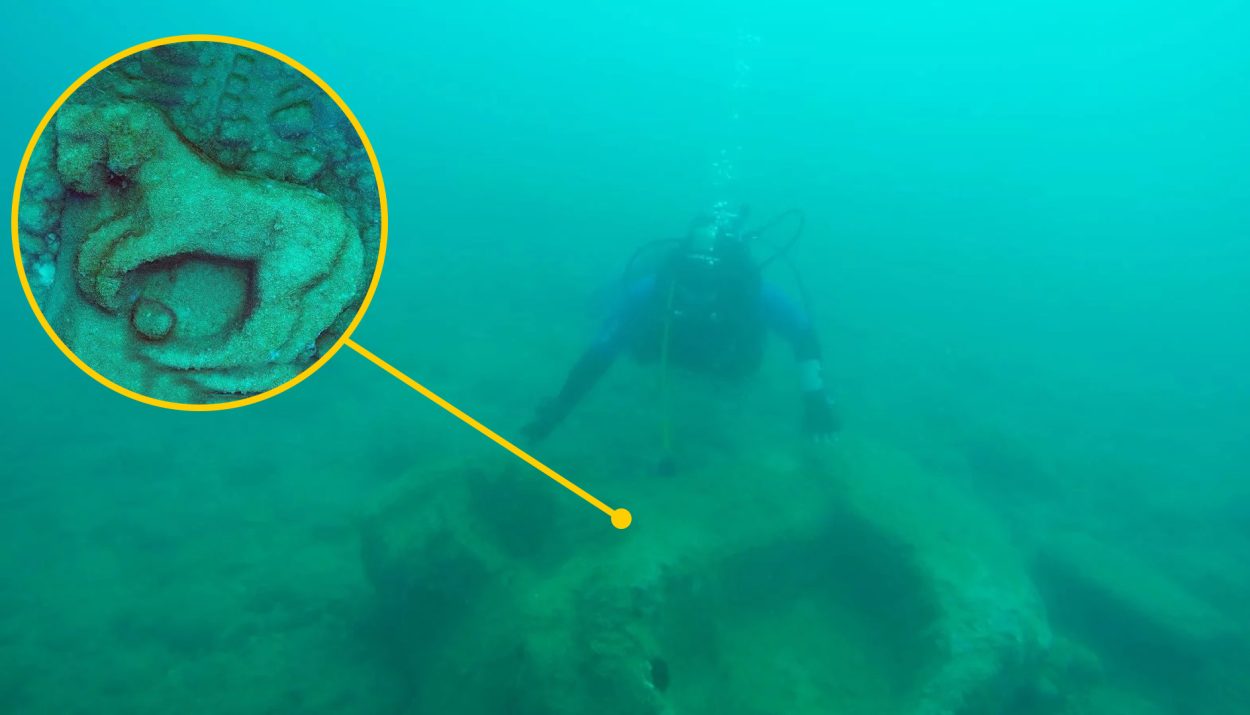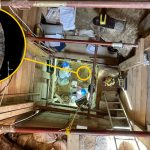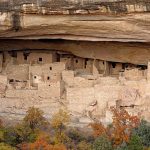Divers exploring the Sea of Agrigento off the coast of Sicily have known about a strange, large object on the seabed about 30 feet below the waves for some time. In fact, diving maps of the area include this object which is labeled as a “vasca,” or “tank.”
It wasn’t until late 2022 that anyone bothered to investigate this concretion-crusted object. And it wasn’t until earlier this year that the results were announced. By Zeus, there was much more to the “vasca” than anyone ever imagined!
Nothing But a Tank
Scuba diving maps are created to show divers all the underwater attractions and features in a specific area. By noting the locations of certain features, divers can use that information to orient themselves in the water and find their way from one feature to the next.
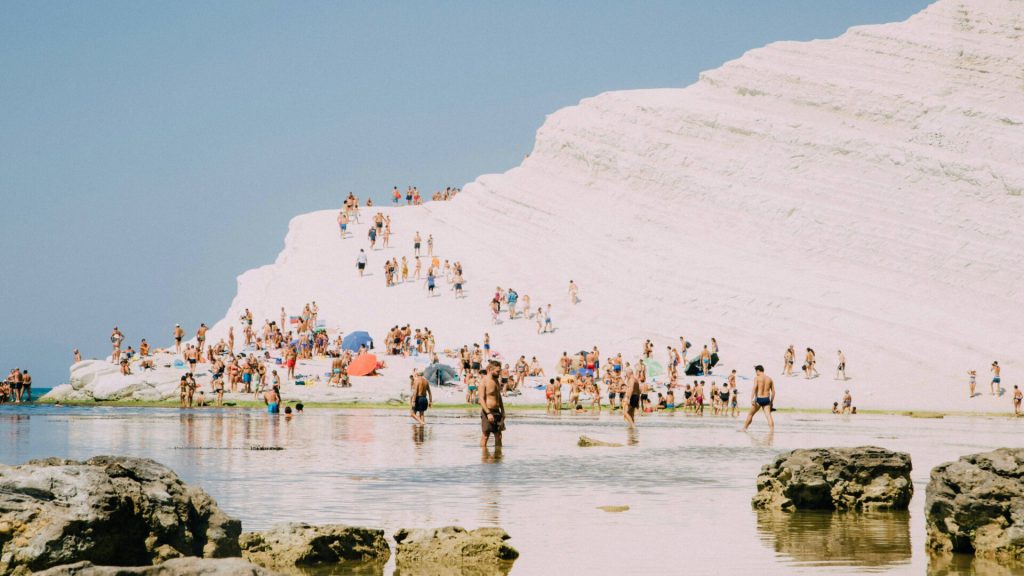
The “vasca” was one such feature. It was roughly 980 feet from the shoreline and was completely encased in mineral deposits, marine life deposits, and seaweed. It was impossible to see what the feature really looked like beneath that thick layer of composition. One dive team wanted to get a better look.
Scanning the Vasca
In late October 2022, a team of scuba divers, under the direction of Gaetano Lino, meticulously scanned the submerged object with state-of-the-art imaging equipment. Their hope was to be able to create a three-dimensional model of the “vasca” and to be able to peer through the years of sediment build up to see what lay beneath.

It took some time for the data in the scans to be fully analyzed. When the results came back, no one was prepared for the stunning and potentially historic discovery. The divers knew immediately that they had to take their scan results to local experts.
An Amazing Realization
Working with representatives of the Superintendency of the Sea and the Carabinieri Cultural Heritage Protection Unit, it was revealed that the “vasca” was no tank at all. It was, in fact, a large slab of marble that was more than one-foot thick.

Carved on the marble was the relief of a prancing horse. Both the marble slab and the relief carving were quite old. The timeline and the decorative nature of the marble pointed to one inescapable conclusion … this was a long-lost piece of the Temple of Olympian Zeus!
The Temple of Olympian Zeus
Ancient Greece was home to numerous large and important temples, many of which were dedicated to the god Zeus. The Temple of Olympian Zeus in Agrigento, Sicily, was one of them. It would have been the largest temple of its kind ever constructed but it was never finished.
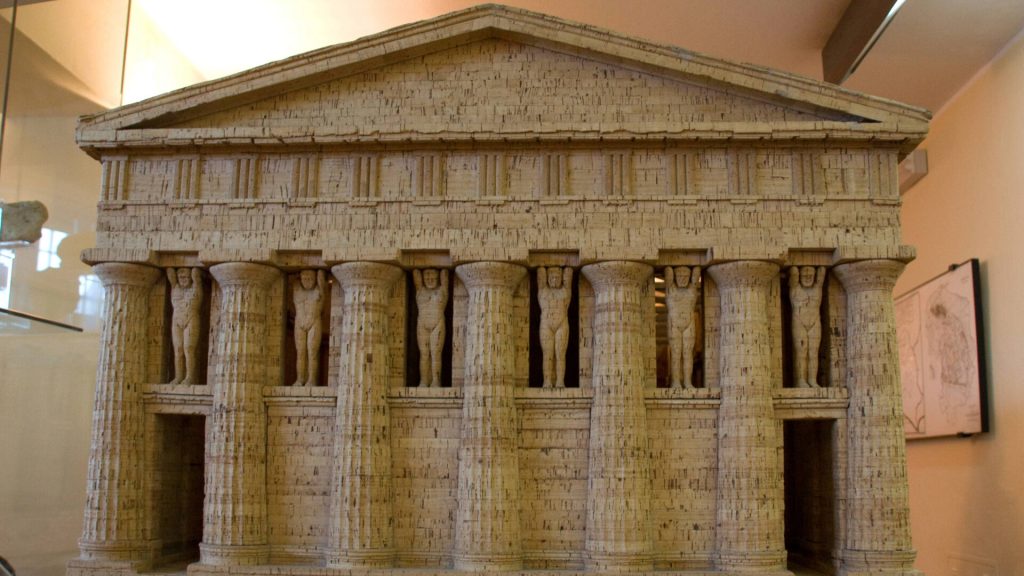
According to historians, work on the temple probably began following the Battle of Himera in 480 BC and was meant to commemorate this Greek victory over the Carthaginians. Since about the 8th century BC, Sicily was under Greek control and many prominent Greeks made their homes there.
Building the Temple
The Temple of Olympian Zeus was erected in an area of Agrigento called the Valle dei Templi. There were already several major Greek temples at this site when the Carthaginian soldiers, who were defeated, captured, and enslaved in the battle, were forced to build the temple.

The Carthaginian slave labor force was also the reason why the Temple of Olympian Zeus was never finished. When the Carthaginians sacked Sicily during the Siege of Akragas in 406 BC, they put an end to the massive construction project.
‘Great Magnificence“
Much of what we know about the Temple of Olympian Zeus in Agrigento comes from the writing of Diodorus, an ancient Greek historian. He wrote that, following the Siege of Akragas, the temple’s roof was missing.

In the second century BC, another great Greek historian, Polybius, wrote a poetic description of the Temple of Olympian Zeus. He stated that “other temples and porticoes which adorn the city are of great magnificence, the Temple of Olympian Zeus unfinished but second it seems to none in Greece in design and dimensions.”
A Temple in Ruins
We know from the writings of Diodorus that the temple had no roof in 406 BC. After that, the massive structure continued to decline. With each earthquake that rocked the island of Sicily, more and more of the temple collapsed.

In the 1700s, marble stones from the ruined temple were removed and reused to build the modern town of Agrigento, as well as the neighboring village of Porto Empedocle. Visitors to the site today will find only a large stone platform with some stone blocks and fallen pillars … the last vestiges of the temple.
The Marble Horse
The recently discovered marble relief of a horse was, according to experts, a decorative feature from the Temple of Olympian Zeus. The carving resembles the style used in other Greek temples.
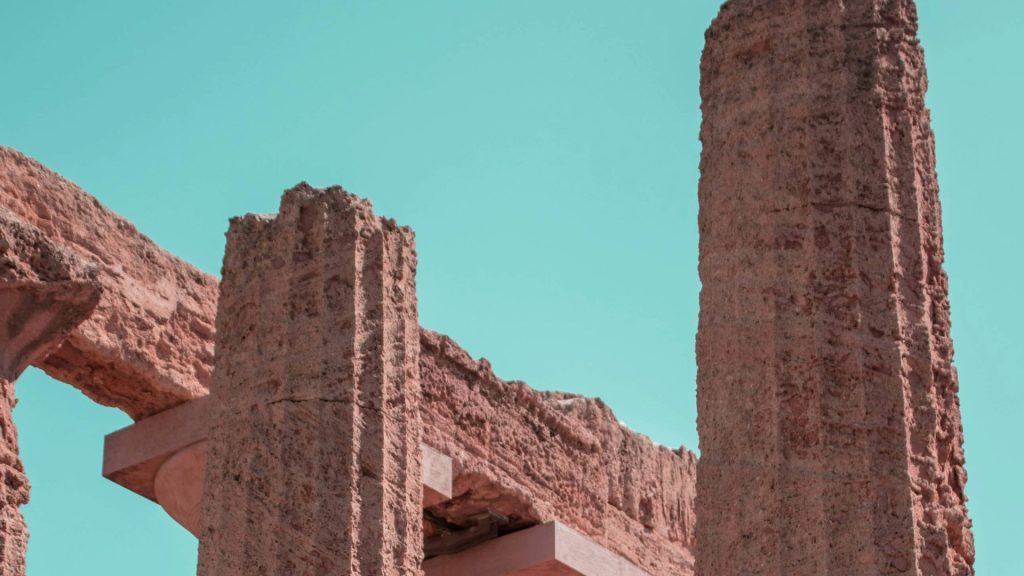
The massive piece of marble – which measures about six feet wide and five feet high – was most likely quarried in what is now Turkey and shipped to Greece before being sent to Sicily. It is more than 2,500 years old.
How Did the Horse End Up Underwater?
The location of the marble horse was in the Sea of Agrigento, near the mouth of the Akragas River. This could provide a clue as to how the ancient Greek artifact ended up at the bottom of the sea. Could the relief carving have been taken by the Carthaginians as a spoil of war? Did it fall from a Carthaginian ship or sank with a vessel?

Or did earthquake activity send the marble horse into the sea? According to experts, we may never know how the object ended up underwater, but we do know it was submerged for a long time. The mineral deposits and sediments layered on the marble had accumulated over centuries.
Bringing the Marble Horse to the Surface
Earlier this year, a dive team from the Carabinieri Cultural Heritage Protection Unit and divers from BCSicila, a volunteer organization, coordinated the recovery of the marble horse, under the direction of the Superintendency of the Sea.
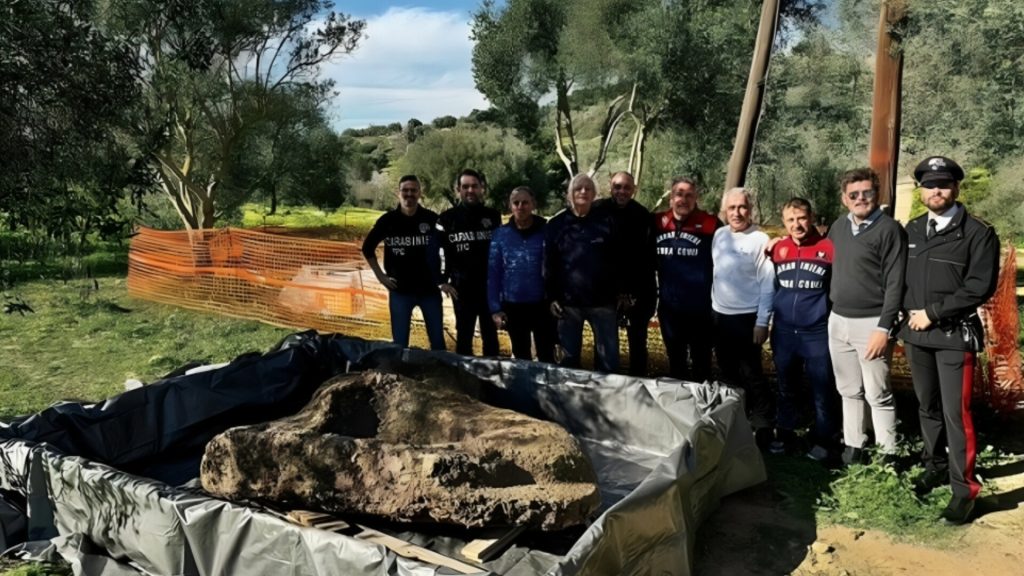
It was no easy task. The marble is large and heavy. In addition, the weather conditions forced the divers to call off the first two attempts. But they were successful in their third try. According to a representative from the Superintendency of the Sea, the layers of concretion will be carefully removed, and the marble will be cleaned.

